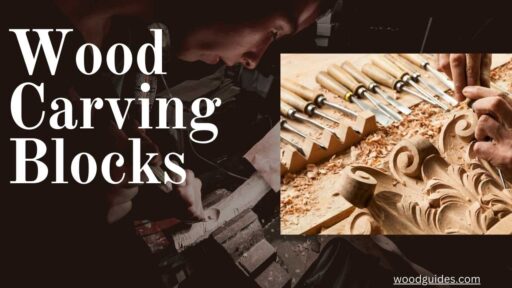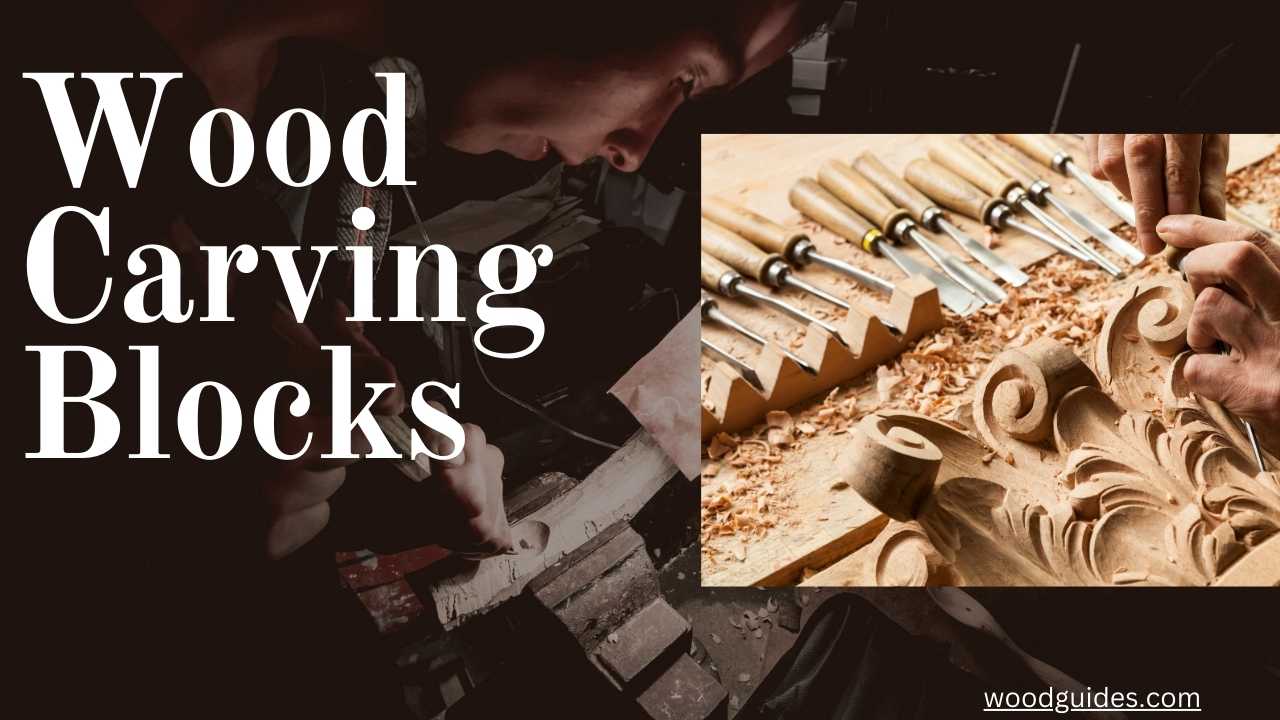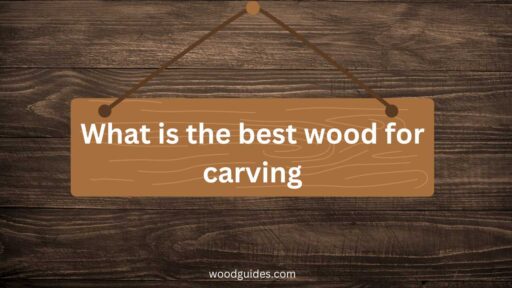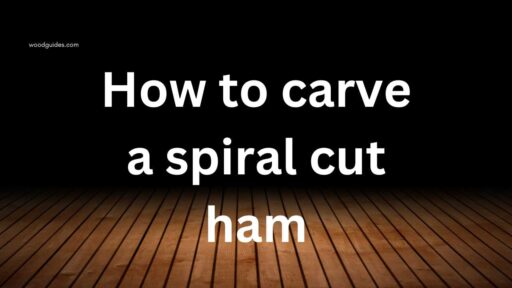Experience the beauty of wood carving with our premium blocks. Choose from a variety of sizes and types to create stunning masterpieces. Start carving today!
Wood carving has been present from time immemorial, connecting art with carpentry. Wood carving is also a method of expressing oneself through wooden materials. This is an inclusive guide that will help you understand everything about wood carving blocks, including types, benefits, techniques for working with them, and tools needed. If you are an experienced carver or even a beginner, the right choice of wood may make all the difference in terms of your carving experience.
Wood Carving Intro
For many people, wood carving is more than just a hobby; it is their passion. It allows individuals to create sculptures that are beautiful, intricate designs or unique objects that can be used as both functional and decorative items. This is one art process that can be very fulfilling since there isn’t any better pleasure than starting off with a slab of timber after finishing it with something much more valuable.
However, like any other form of artistic work, it calls for patience, mastery, and the right resources. Woodcarving blocks, therefore, come into play, as mentioned before. They act as canvases where artists put their ideas when coming up with artwork.
What Are Wood Carving Blocks?
These are pieces of wood that have already been cut out to fit the purpose of creation they were meant for; hence, they are called pre-cut pieces specifically designed for carving. Different sizes, shapes, and types/ species of wood can be used while making these blocks due to different properties and challenges some might pose towards users/wood carvers, which differ depending on the specific size, shape, and kind/ species that was used in its manufacturing process.
These are the packs that initiate every project involving sculpture-making artistically by either chiseling off parts or curving the desired features out from them altogether, hence giving life to someone’s imagination/ideas/aesthetics into reality. The quality of block material heavily impacts outcomes during sculpting procedures as well as at the completion stage; hence, this makes selecting an ideal block type for carving purposes a must.
Types of Wood Carving Blocks
There are many types of wood suitable for carving, each presenting its own unique features. When starting out, beginners often prefer working with softwoods such as pine, spruce, and redwood because these woods are easily carved. However, softwoods cannot take delicate details well. Hardwoods like walnut, oak, and maple have more resistance and are better for detailed work. On the other hand, there exist special woods, such as mahogany and ebony, which have rich colors and grains that make them look very beautiful in carvings.
Advantages of Using Quality Wood Carving Blocks
The use of high-quality wood carving blocks can really change how you go about your carving exercise and the outcome of the final product. Such kinds of blocks are normally made out of good quality timber, chosen carefully to ensure that there aren’t any faults such as knots or cracks in it. This preparation makes the carving process smoother and more enjoyable, allowing for finer details and a more polished finish. Additionally, premium blocks also serve to strengthen the sculptures’ sturdiness, thereby making sure that they will be passed down through future generations.
Choosing Ideal Wood Carving Block
The first step in creating a wood carving is choosing the right type of wood. One must consider how hard the wood is; softwoods are easier to carve but may not carry details as fine as hardwoods, which can withstand more pressures yet still allow for intricate designs. Grain orientation also affects the ease of working with a given piece; straight-grain ones are easier to handle compared to those with irregular or cross-grains. This is also influenced by the size and shape of the block relative to the intended project. Finally, their aesthetics, including colors and textures, should be desired for the final pieces.
Wood Carving Techniques Using Best Blocks
It is worth noting that understanding the artistry behind using high-quality wood blocks requires one to learn different wood carving techniques. Some examples of these include whittling, chip carving, and relief carving approaches, all having unique applications based on what kind of projects they will work best on and how detailed they will be.
Knowing what kind of technique matches particular properties of block material is important for anyone dealing with wooden blocks used in sculpturing, such as softer ones being perfect for whittling or hard types great for either chip carving or relief carvings. Only through experimentation and experience will one find out what works best for each assignment.
Tools and Instruments Used For Wood Carving
As much as you need good timber, every sculpture requires some tools, too. Basic sets of implements contain knives, gouges, chisels, and mallets, among others, commonly known by carvers who understand well their importance in performing certain tasks associated with cutting shapes on various hardwoods.
While knives are suitable for small cuts and fine detailing purposes, gouges/chisels are used to shape while removing big portions at once from an artwork wooden piece before reaching its’ completion stage, hence making them very important in any carving process, which can take quite long time depending on its’ size & complexity level involved.
The use of quality equipment can greatly improve the experience and quality of work when working on a carving.
Wood Carving Steps
Step 1: Woodcarving Block Basics
There’s a lot of wood in the world that waits to be carved, so it is important to know basics. Softwood blocks such as pine are best for beginners, having an easily mold able texture revealing fine details. On the other hand, hardwoods like oak or mahogany are heavy duty materials used for making intricate and durable objects.
Special woods like basswood and butternut are coveted due to their straight grains and lack of resin. As a result, they tend to be consistent in shape more than other natural products can offer.
Step 2: Choosing your Canvas
The first step you should make while doing any sculpture is selecting the right block for it. It’s not just about picking up any piece of timber that is nearest to you; it’s about knowing what this material is.
The grain direction should also be taken into account since it will indicate how easy it will be to carve as well as how strong the final structure becomes. Consideration must also be given to density—dense woods hold finer details but require greater effort in carving through them. The size directly affects both the design scope and the amount of time spent on sculpting.
In case of doubt always aim at striking a balance which suits your level of skill along with ambition behind that particular project by choosing relatively expensive non substandard block available around. For high-quality results, invest in good timber that will contribute towards improving your workmanship standards.
Step 3: Creating Your Canvas
Once you’ve chosen the perfect wood block, the preparation phase is the next bridge to cross. Proper cutting and sanding methods will mold your block into a carve-able shape; however, sealing the wood not only stops cracks but also gives direction to painting and staining later on.
Do not hurry through this process—building your canvas before designing sets a base for the accuracy and final outcome of your work. This initial phase is at the crossroads between skillfulness and artistry that fuses pragmatics with creativity.
Step 4: The Dance with Wood and Steel
Now, it’s time to dance with wood and steel once again because your block is prepped. Understanding basic terms associated with carving tools like knife, gouge, and v-tool guarantees that one can go from relief carving to whittling, among other wood-carving techniques.
Draw a simple design on your block, then follow our step-by-step guide on how to bring it into being. Keep in mind there is no need for rushing—carving should remove just enough material to preserve its natural qualities.
Step 5: Caring for Your Creations
Your carved pieces speak volumes about your talent as well as your dedication. When not displayed, their proper storage ensures that they maintain their beauty while retaining their integrity. Therefore, keeping carved blocks away from harsh temperatures or moisture fluctuations prevents them from warping or cracking.
Maintaining quality carvings requires regular care, such as light polishing or reapplying sealant when necessary. By doing so, you keep up the look and stay protected against suffering damage over time.
Step 6: In the End, the Wood Will Speak
Wood carving is an interaction between an artist and his/her medium of expression. Hence each chisel mark whispers out secrets of a tree carrying it forward into another form of life. If one recognizes significance of wood carving blocks he respects history behind this art thus paving way for its brighter future.
Put this newfound knowledge into practice in your next carving. Show us what you have made, and continually stretch the boundaries of possibility with each project, as wood carving can be a limitless realm like the rings in a tree. Happy Carving!
Safety Tips for Wood Carving
Wood carving is rewarding but can pose hazards without safety measures. Splinters and flying debris could cause injury; hence, always wear gloves and goggles as protective gear. Paradoxically, sharp-edged tools should be used since they are safer than blunt ones that slip easily due to excessive force employed when using them. In addition, work under good lighting and ventilation conditions while ensuring that the sharp edge is not directed towards oneself during carving. Proper observance of safety precautions can go a long way in preventing accidents, making wood carving more enjoyable.
Maintenance and Care for Wood Carving Blocks
Taking care of one’s wood carving blocks through proper maintenance will help keep them intact so that they can still serve one well in subsequent projects. Prior to starting, the block needs to be clean and free from any foreign substances that may affect how it is carved out. After sculpting or whittling, there might remain little dust bits here or there on the surface, which are supposed to be brushed off gently by hand or with a brush to give our work a finer finish;
however, if for some reason these elements are not taken away then we can achieve this by use of compressed air guns which will literally blow off all particles leaving our work immaculate as required (199).
If, however, it starts becoming dry or cracking, it may need some wooden conditioner applied to it so as to retain qualities inherent within; finally, wooden locking must be kept at cool, dry places where there is no sunlight falling directly into them in order to prevent cracking or even warping (200).
What Are Some Places Where You Can Buy Best Quality Fine Wood Carving Blocks?
For any carver, having good wood carving blocks is very important. Specialty woodworking stores are a good place to begin looking for the blocks in question. Also, you can find them on the websites of online retailers and craft shops. Based on this, when buying these items, look for dependable suppliers who disclose where they came from as well as how they were obtained and prepared, thereby ensuring that you get what suits your carving needs.
FAQs
Which type of tree is used by beginners in woodcarving?
Commonly chosen for novices because it can be carved easily and has few grains, softwoods such as basswood are highly recommended.
Are all woods suitable for carving?
Though every kind of wood can technically be carved, some woods are more suited to this than others; therefore, selecting the right one makes the process easier and enjoyable.
How do I stop my carving from cracking?
To prevent your finished piece from being damaged by temperatures or humidity changes, use a wood conditioner or sealer. Also, avoid placing your wooden sculptures in direct sunlight.
Conclusion
Advanced craftsmanship in wooden sculptures is achieved through dedication, perseverance, and experimentation. However, the initial step lies in sourcing appropriate materials. The purchase of premium wood carving blocks provides a strong base for every project that will ensure greater detail, smoother progressions during carvings, and the durability of final products.
By familiarizing yourself with various types of timber available, advantages attached to high-quality blocks plus ways of shaping them accordingly can make a difference to your wooden crafting ventures altogether. Choosing the most appropriate block is an important part of beginning any kind of artwork using timber, regardless of whether you have little experience or enough skill to make you proficient in it.





